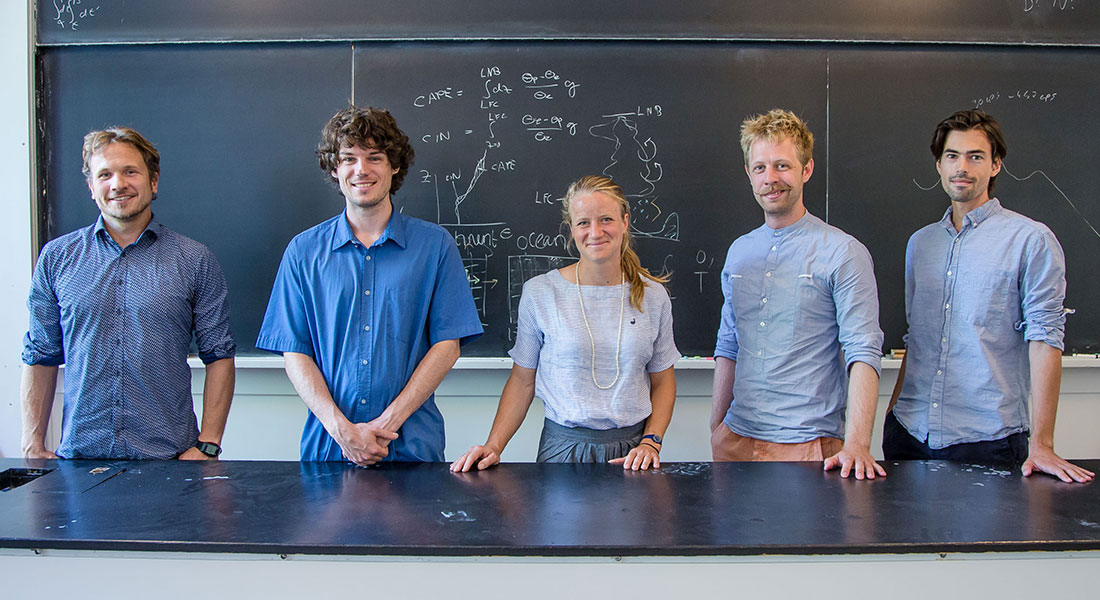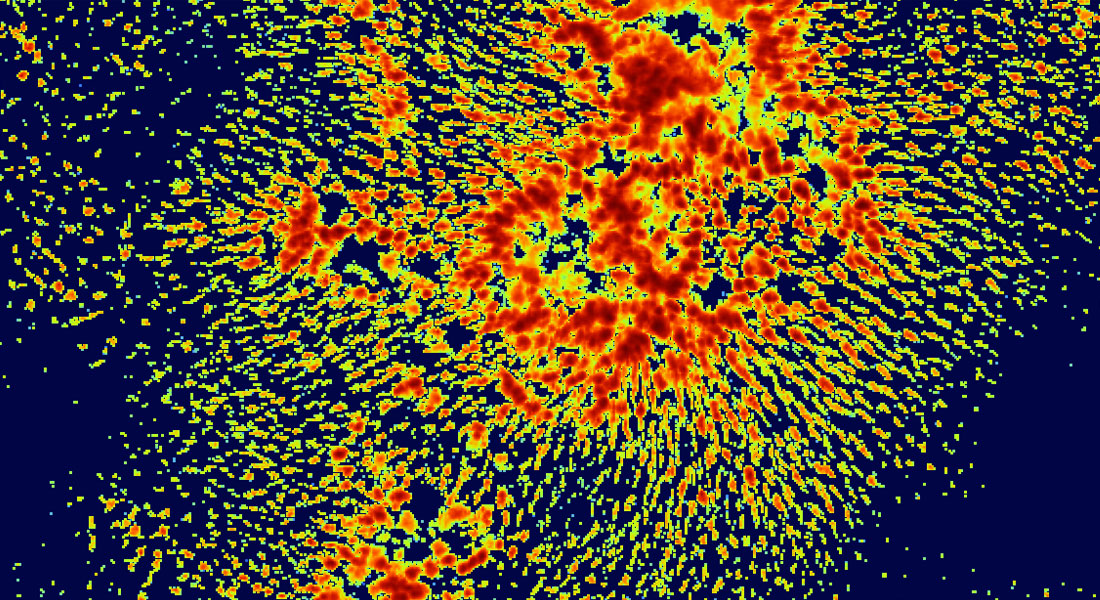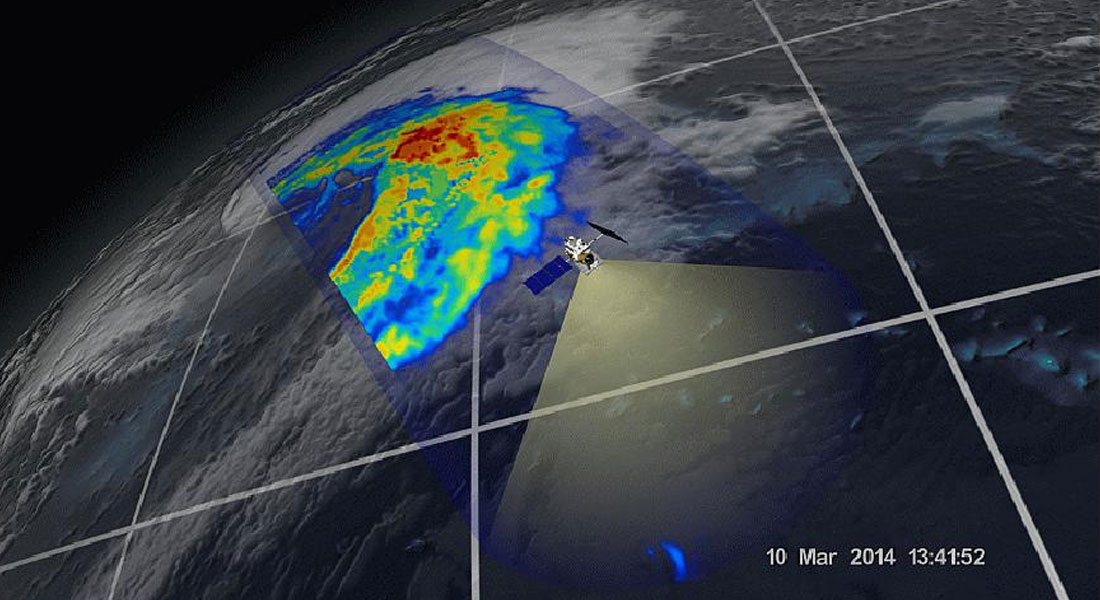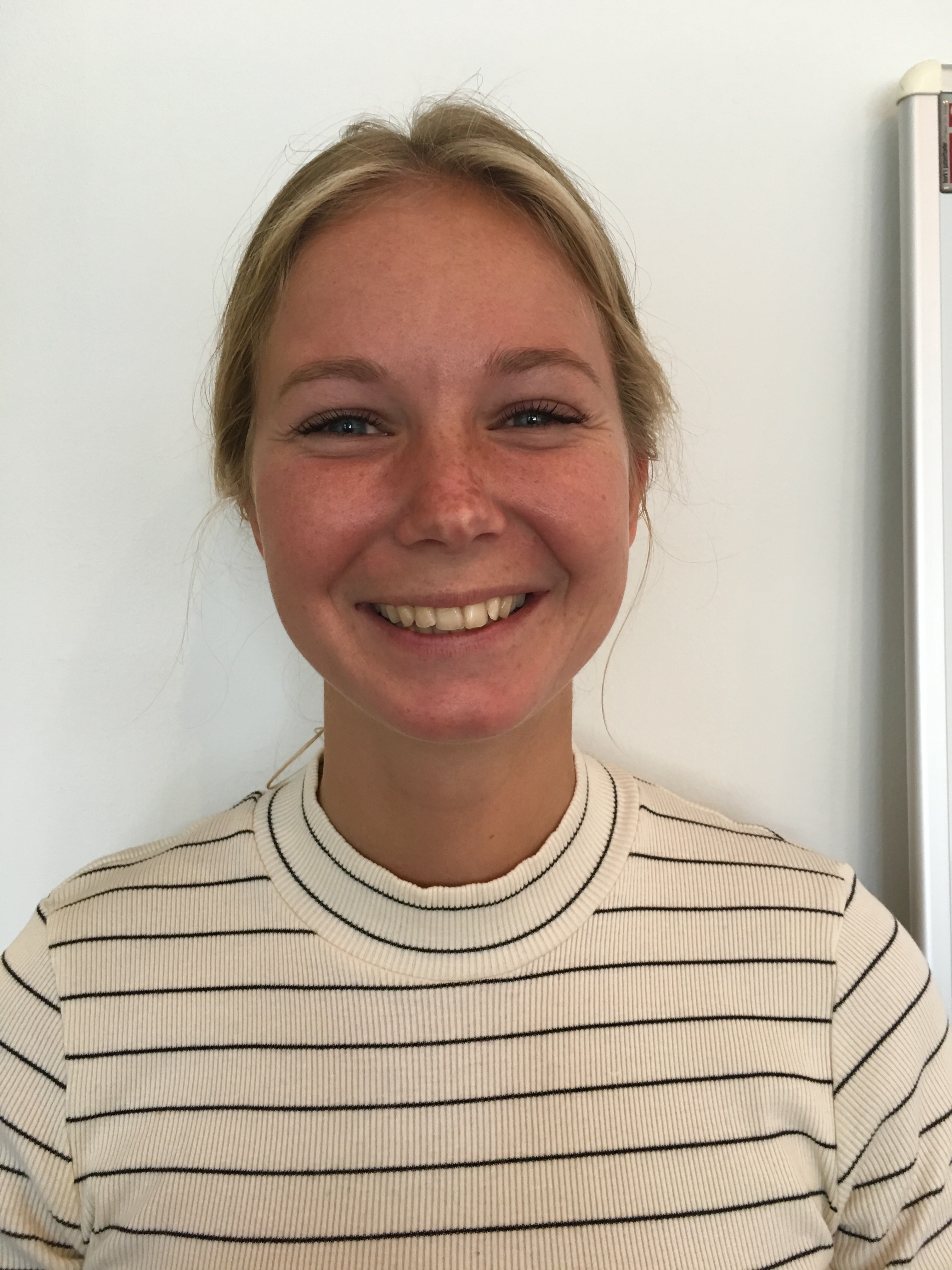Atmospheric Complexity
The aim is to capture emergent aspects, e.g. self-organization, that originate from small scales but can impact on larger scales. We use high-resolution simulations and observational data and make simplified, conceptual, models of key aspects of atmospheric complexity. Atmospheric Complexity is funded by a Villum Young Investigator Grant and a European Research Council (ERC) Consolidator Grant. Atmospheric Complexity collaborates with Complexity & Climate at the Leibniz Centre for Tropical Marine Research (ZMT), Bremen.
Please find here some information about Atmospheric Complexity as well as the team leader.
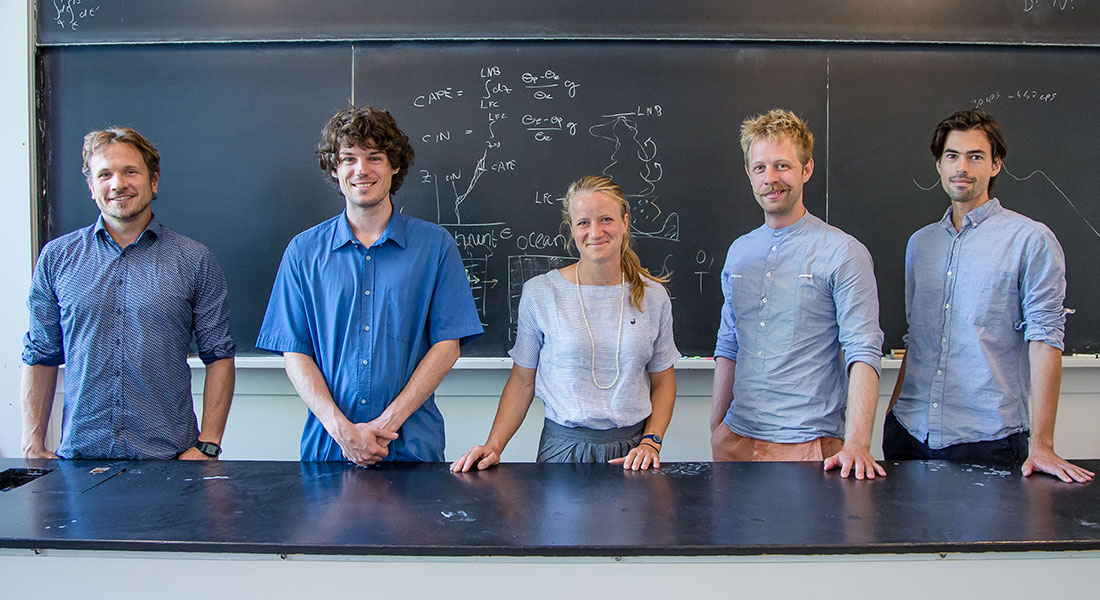
Atmospheric complexity
Climate research currently faces a dilemma: in a quest to make simulations more realistic, models are becoming increasingly sophisticated by incorporating more and more processes. Yet, despite increased apparent realism of the model output, basic understanding of the underlying physics becomes more challenging — the analysis of the model output itself sometimes resembles that of observational data.
The Atmospheric Complexity team combines methods from non-equilibrium statistical physics, high-resolution simulations, and the best available observational climate data to improve process understanding of clouds and precipitation.
The team is led by Jan O. Haerter and is group leader both at the Niels Bohr Institute, Copenhagen, Denmark and the Leibniz Centre for Tropical Marine Research (ZMT), Bremen, where Jan leads the group Complexity & Climate. Continuous exchange between the two institutes is promoted, e.g. through joint PhD projects. The group collaborate locally with the Center for Ice and Climate, the Climate and Geophysics Group, the Center for Models of Life, and externally with the Max Planck Institute for Meteorology, Hamburg, Germany, the Swedish Meteorological and Hydrological Institute, Norrköping, Sweden, KNMI and TU Delft, Netherlands, as well at the ETH Zürich. At Niels Bohr Institute there is a strong tradition for the study of self-organization in complex systems. Examples include self-organized criticality, evolutionary models, and conceptual models in biology.
research funding: We are currently aiming at understanding the role of convective precipitation in a changing climate, an initiative funded by a generous Villum Young Investigator grant. More generally, we study self-organization of convection from small scales to large, within an ERC Consolidator Grant.
Team leader
Jan O. Haerter holds a PhD in theoretical condensed matter physics from the University of California at Santa Cruz, USA (2007). His thesis, advised by B. Sriram Shastry, dealt with the quantum mechanics of strongly interacting electron systems in two-dimensional frustrated systems, e.g. the Sodium-Cobalt oxide compound.
Since his PhD, Jan has ventured into a range of complex systems topics. Predominantly, he has been engaged in the physics of the atmosphere, in particular the global hydrological cycle and precipitation extremes on varying spatial and temporal scales. He followed these topics during his postdoc at Max Planck Institute for Meteorology (MPI-M) during 2007-2010. During this time, Jan was involved in the European Water and Global Change Project (WATCH).
In 2011, Jan joined the Center for Models of Life ( ) at Niels Bohr Institute. At CMoL, Jan has studied a range of additional complex systems, taken from biology, ecology, and social network science. He followed this thread of theoretical complex systems science during a research visit at the University of Barcelona (2015-2016).
Since 2016 Jan leads the Atmospheric Complexity group at Niels Bohr Institute. Since 2020, Jan additional is group leader of Complexity & Climate at Leibniz ZMT and is also affiliated with Jacobs University Bremen. Jan holds a Villum Young Investigator Grant and an ERC Consolidator Grant.
Publication list (google scholar)
How do clouds influence the climate system? How do they form intense precipitation? Such questions have challenged atmospheric science for decades. High-resolution simulations and observations bring us closer to answering them, yet, fundamental processes are not understood.
This is because clouds organize on a range of scales, scales interact and precipitation is a result of abrupt changes of phases, leading to abruptness, e.g. intermittancy, in the moisture dynamics. Furthermore, convective-type cloud has been shown to produce unexpectedly strong precipitation intensity, not explained by equilibrium thermodynamics.
The team uses methods from theoretical physics to describe and model atmospheric processes. The aim is to capture emergent aspects, e.g. self-organization, that originate from small scales but can impact on larger scales. We use high-resolution simulations and observational data and make simplified, conceptual, models to capture key aspects of atmospheric complexity.
What is convection?

Convective precipitation observed over Cuba.
Convection is buoyancy driven
Convection is a consequence of strong heating of moist surface air. Warmer air expands and is therefore subject to buoyancy relative to the surrounding, more dense, air. This buoyancy causes rapid lifting of surface air. In contrast, stratiform cloud is often caused by cyclonic activity, where the collision of fronts causes large-scale lifting of moist air. Such lifting processes are generally slow compared to convective updrafts.
Convective precipitation is local
In general terms, the convective precipitation of a single convective updraft (see the image to the right) falls over relatively short times and covers areas of only few kilometers across. For extreme events, it is not uncommon to measure 50 mm of rain in one hour. Such strong rain can cause flash floods, local floods that arise within hours and can be devastating to human lives and infrastructure.
Convection is hard to simulate in climate models
Because of its local nature and complex dynamics, convection continues to pose basic challenges in coarse-scale models. Standard climate models have horizontal resolutions of roughly 50 km, while typical scales of convective events are far less than that, often around 1-10 km. To simulate single events, or their interaction, properly, models must have resolutions better than 1 km.
Our approach
Stating the problem
Rayleigh-Bénard convection is a classical problem in complex systems science: When a fluid is placed in between two horizontal plates and the lower one is heated relative to the upper, so-called convective rolls will eventually appear. These rolls constitute a form of symmetry breaking, by which some areas see locally rising, others locally sinking fluid parcels.
The dynamics of the atmosphere can be modeled as a fluid for many practical purposes.
However, in contrast to classical convection, that of the atmosphere arises due to a fluid containing varying phases: The water vapor contained in the air can condense to produce cloud droplets, thereby releasing latent heat. Further, when rain falls to the ground by the action of gravity, latent heat is redistributed vertically. These are processes that can act to break the initially rising motion of moist air parcels, thereby - in a sense - destroying convective rolls.
Tackling the challenge
State-of-the-art global climate models are still far from capable of resolving scales of convective clouds througout the extended periods needed for climate simulations (at least 100 years). Yet, for short periods and smaller areas, so-called large-eddy simulations (see left column) can resolve turbulent processes down to tens or hundreds of meters. We use such simulations, which also represent simplifications of the real atmosphere, but do allow us to extract processes responsible for the organization of the atmosphere through convection and intensification of precipitation extremes.
While simulations are convenient in accessing processes, the most direct way to study convection is through meteorological observations of the atmosphere. The atmospheric state consists of a large array of variables, e.g. temperature, moisture, wind speed and pressure, just to name a few. Precipitation, however, is the quantity that most directly affects the living environment, e.g. humans. As it plays a crucial role in re-distributing energy and moisture within the climate system, and occurs as an intermittant process, it is particularly important to gather detailed, high-resolution observations on it. Some observations we currently use are those from ground-based stations, radar reflectivity and satellite observations.
Conceptual modeling
Simulations and observations can tell us a whole lot about convective transport of moisture and energy. However, there is always a risk of taking a realistic simulation as meaning that the system is "understood". The more complex the simulation output, and perhaps the more it is visually compatible with observations or intuition, the less we actually grasp the abstract processes behind the formation and organization of clouds in the atmosphere.
We use methods from physics of complex systems to describe the self-organization of convective clouds. Requiring simplified models we can re-enact, at least qualitatively, some of the emergent phenomena seen in observations or simulations. We leave out some of the complexity — leading to better understanding and sometimes inspiring new predictions for future climate change.
Beyond this, simplified models can be more universal, describing similarities of disparate fields, such as atmospheric science and biology or even social science, fields that are also explored at Niels Bohr Institute.
- Center for Ice and Climate, Niels Bohr Institute
- Danish Meteorological Institute
- Max Planck Institute for Meteorology, Hamburg, Germany
- Swedish Hydrological and Meteorological Institute, Norrköping, Sweden
- University of Adelaide, Australia (Prof. Seth Westra)
- TU Delft and KNMI Netherlands (Kai Lochbihler)
- University of Utrecht, Netherlands (visiting student)
- Leeds University, UK (ongoing collaboration)
Complex Physics (MSc level course, Block 1)
In Fall 2018, 2019, and 2020, Jan O. Haerter was teaching the first part of the Master's course "Complex Physics".
Topics in Complex Systems (MSc level course, Block 1)
In Fall 2017, Jan was teaching part of the NBI graduate course "Topics in Complex Systems", which is aimed at MSc students of physics and related disciplines. The topics I teach include critical phenomena and various techniques to explore them. As a model system, we use the classical Ising model.
Topics include:
Mean field theory, 1D transfer matrix method, Low and high temperature series expansion, Monte Carlo (Metropolis) method, 1D renormalization group method.
This course also includes lectures on complex networks, interfaces, agent-based models, and self organization, etc. (instructor: Kim Sneppen).
PhD position on tropical climate extremes (deadline: Mar 31, 2021)
Jannik Hoeller and Irene Kruse have joined the team as PhD students
Welcome!
Congrats to Herman!
For a very successful thesis defense. Best wishes for the future.

Feb 20th, 2019
Thesis defense by Herman Fuglestvedt
Niels Bohr Institute, Blegdamsvej 17, Aud D
Feb 20th, 2019, 10 a.m.
Title: A Conceptual Model for Self-Organisation of Precipitating Convection
Jan 24th, 2019
Paper accepted in the Journal of Advances in Earth System Modeling (JAMES)
Jan 10th, 2019
Marielle successfully defended her M.Sc. thesis, congratulations and all the best for the future!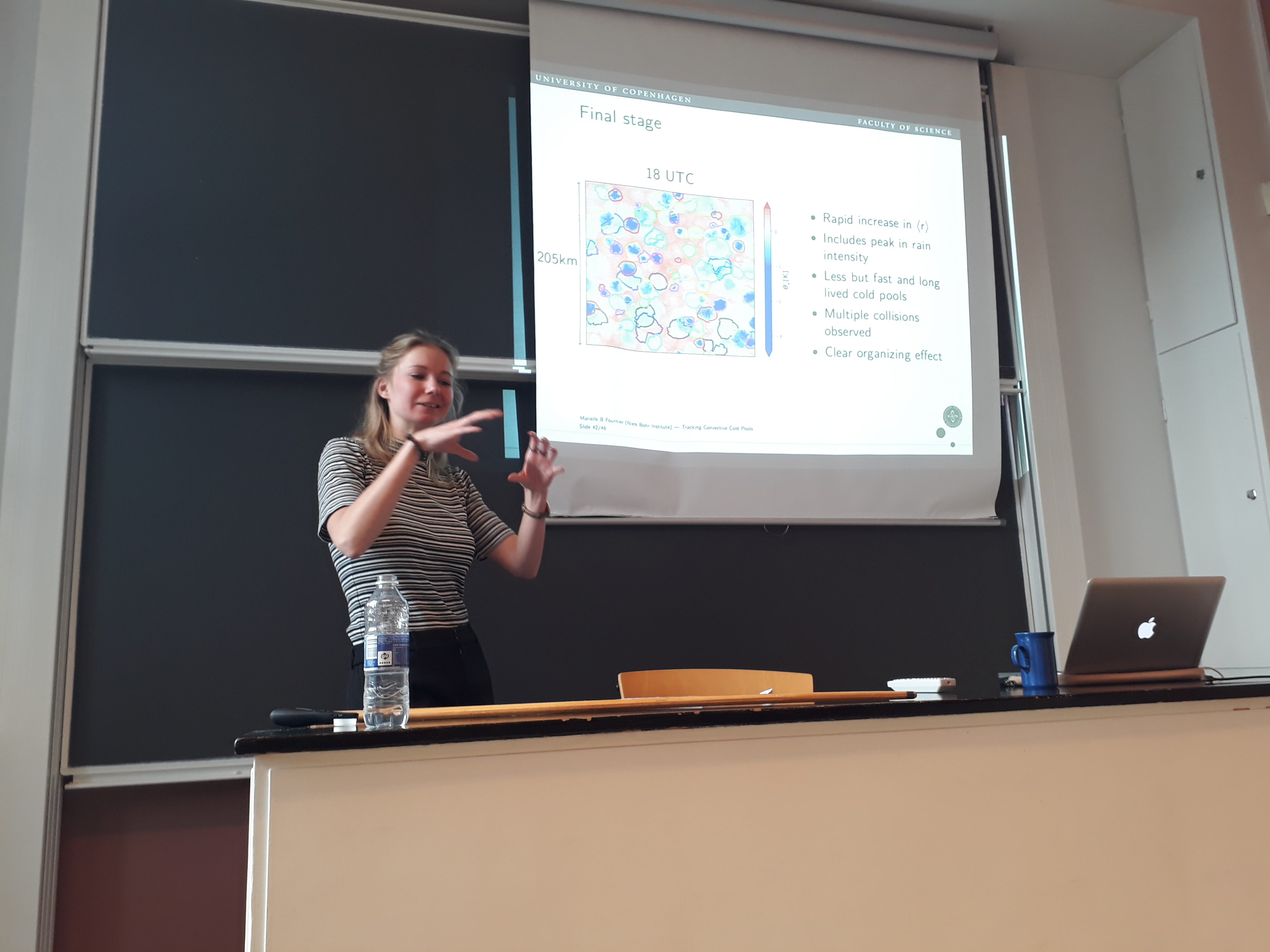
Thesis title: Tracking Convective Cold Pools - A study of cloud interactions
Dec 10th, 2018
Marielle will hand in her MSc thesis on Dec 18th, and her thesis defense will be on Jan 10th, 10 a.m. in Auditorium D.
Thesis title: Tracking Convective Cold Pools - A study of cloud interactions
Nov 1st, 2018
Enrico Maria Fenoaltea start a MSc project on human decision making under complex circumstances, using the example system chess.
Big welcome! 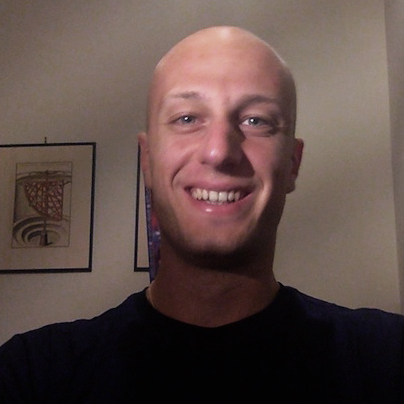
>> read more
+++++++++++++++++++++++++++++++++++++++++++++++++++++++++++++++++++++++++++++++++++++++++++++++++++++++++++++++++++
Sept 1st, 2018
Christian starts a MSc project in Atmospheric Complexity.
Welcome to the team! 
>> read more
Sept 1st, 2018
Christian starts a MSc project in Atmospheric Complexity
Welcome to the team! 
>> read more
• • • • • • • • • • • • • • • • • • • • • • • •
May 31, 2018: New paper published in Geophysical Research Letters:
Jan O. Haerter & Linda Schlemmer: Intensified cold-pool dynamics under stronger surface heating
key result: A new feedback between precipitation and cold pool dynamics, which could explain the super-Clausius-Clapeyron increase of convective precipitation extremes.
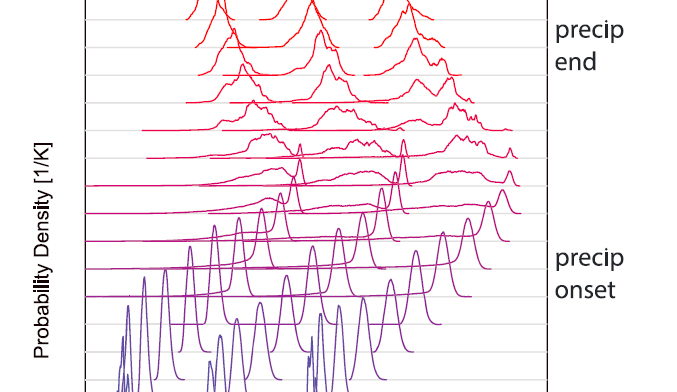
Histograms of near-surface temperature. Note the broadening in the course of precipitation (details: GRL)
• • • • • • • • • • • • • • • • • • • • • • • •
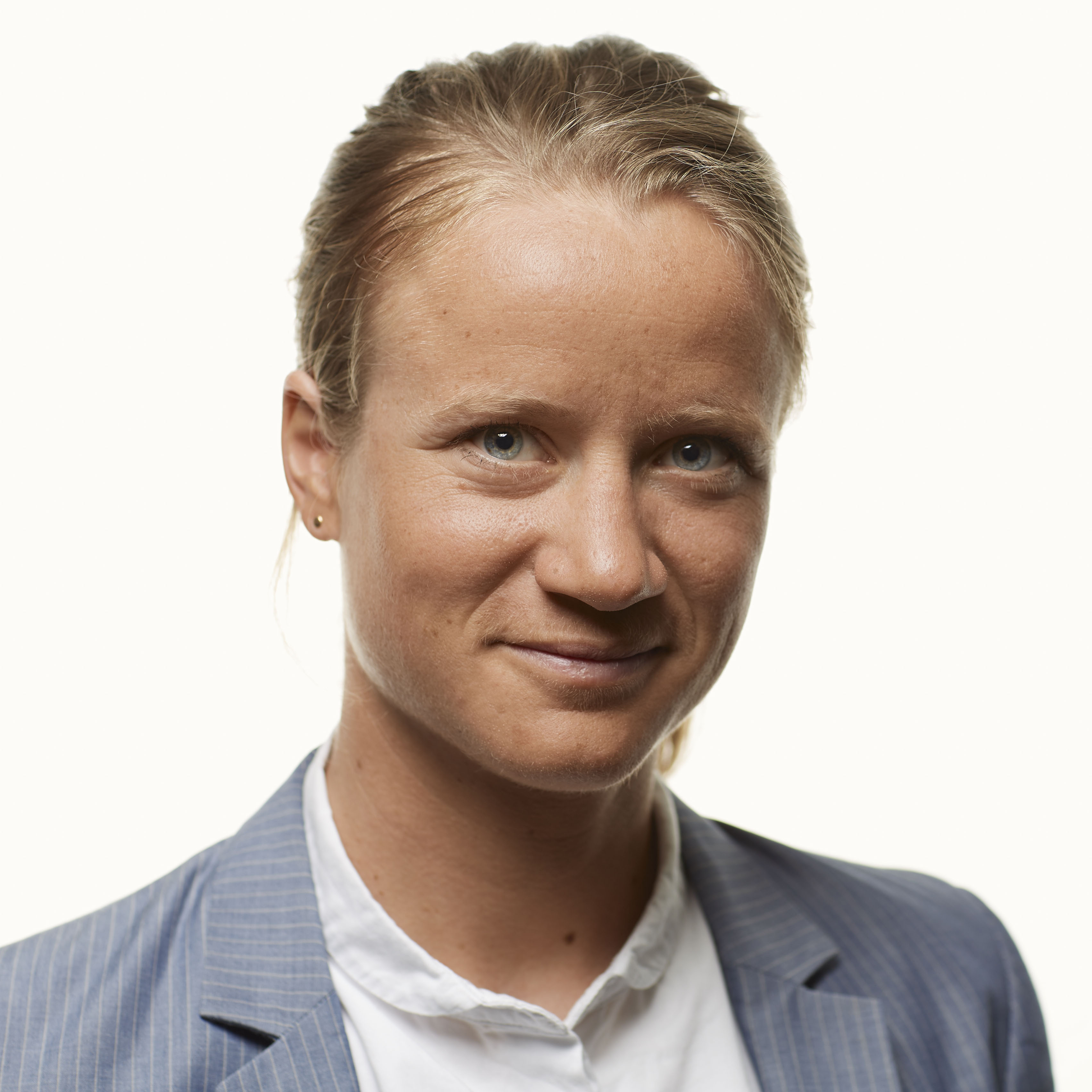
May 28, 2018: Bettina Meyer will join the Atmospheric Complexity group as a postdoc on June 15th, welcome!
Bettina has recently completed her Ph.D. at ETH Zürich in collaboration with Caltech.
• • • • • • • • • • • • • • • • • • • • • • • •
May 4, 2018: Experimental Economics meets Statistical Physics
• • • • • • • • • • • • • • • • • • • • • • • •
Apr 26, 2018: A warm welcome to Kai Lochbihler from TU Delft/KNMI, who will be visiting our group for several weeks. We will be collaborating on convective organization in a range of systems.
our group for several weeks. We will be collaborating on convective organization in a range of systems.
Kai is currently a Ph.D. student with Geert Lenderink (KNMI) and Pier Siebesma (TU Delft).
He has worked on extreme convective precipitation and the possible exceedance of the Clausius-Clapeyron relation.
• • • • • • • • • • • • • • • • • • • • • • • •
Apr 25, 2018: Olga Henneberg will be giving a talk at the AMS meeting in Vancouver in July: "From Cold Pool Interaction to Extreme Precipitation"
• • • • • • • • • • • • • • • • • • • • • • • •
Apr 25, 2018: Thanks to all for the great workshop on convective self-organization!

We hope that this event has helped bring about new ideas and get people together.
Check back for slides and photos of this event on the webpage below.
• • • • • • • • • • • • • • • • • • • • • • • •
Dec 15, 2017: Jan receives ERC Consolidator Grant
We are thankful for this generous grant offered by the European Commission!
“Complex Fluids” brings together the complex systems and geophysical fluid dynamics fields. The focus is on talks with a conceptual modeling view on complexity, e.g. as arising in earth's atmosphere and ocean, in biology, or within the solid earth.
Sign up for the mailing list
We encourage subscription to the Complex Fluids mailing list, to receive information about upcoming seminars.
For suggested speakers and queries please contactJan O. Haerter, Peter Ditlevsen, Markus Jochum, Joachim Mathiesen, Eigil Kaas, or Mogens H. Jensen.
Scope
The scope of this seminar is to encourage models that describe complex processes in fluids, e.g. those involving some type of emergent aspect, self-organization, bistability, oscillations, scale interactions, long-ranged order, you name it ;) Examples are bistability in the climate system, convective processes, extreme events, self-similarity and pattern formation in geology or atmospheric processes, interactions and feedbacks between atmosphere and biosphere, etc.
Conceptual models
We are interested in conceptual (but not necessarily complicated) models that are able to capture the core dynamical processes and (some of) the feedbacks in a fluid dynamical system, without getting lost in comprehensive models and many parameters. The sacrifice may sometimes be, that not all processes are considered, and that quantitative detail is missing.
The gain however lies in the theoretical understanding of the model and thereby at least some aspects of reality. We therefore encourage talks that offer a speculate, provocative view on crucial processes, e.g. in the climate system, that are currently not well understood or uncertain.
When and where:
Wednesdays at noon (communal informal lunch). Presentations start around 12:30 and normally take around 45 minutes. Initially, the seminar will be approximately twice per month.
Where? Kc7, C-floor of K-building, Blegdamsvej 17, 2100 København Ø.
Jan O. HaerterNiels Bohr Institute University of Copenhagen |
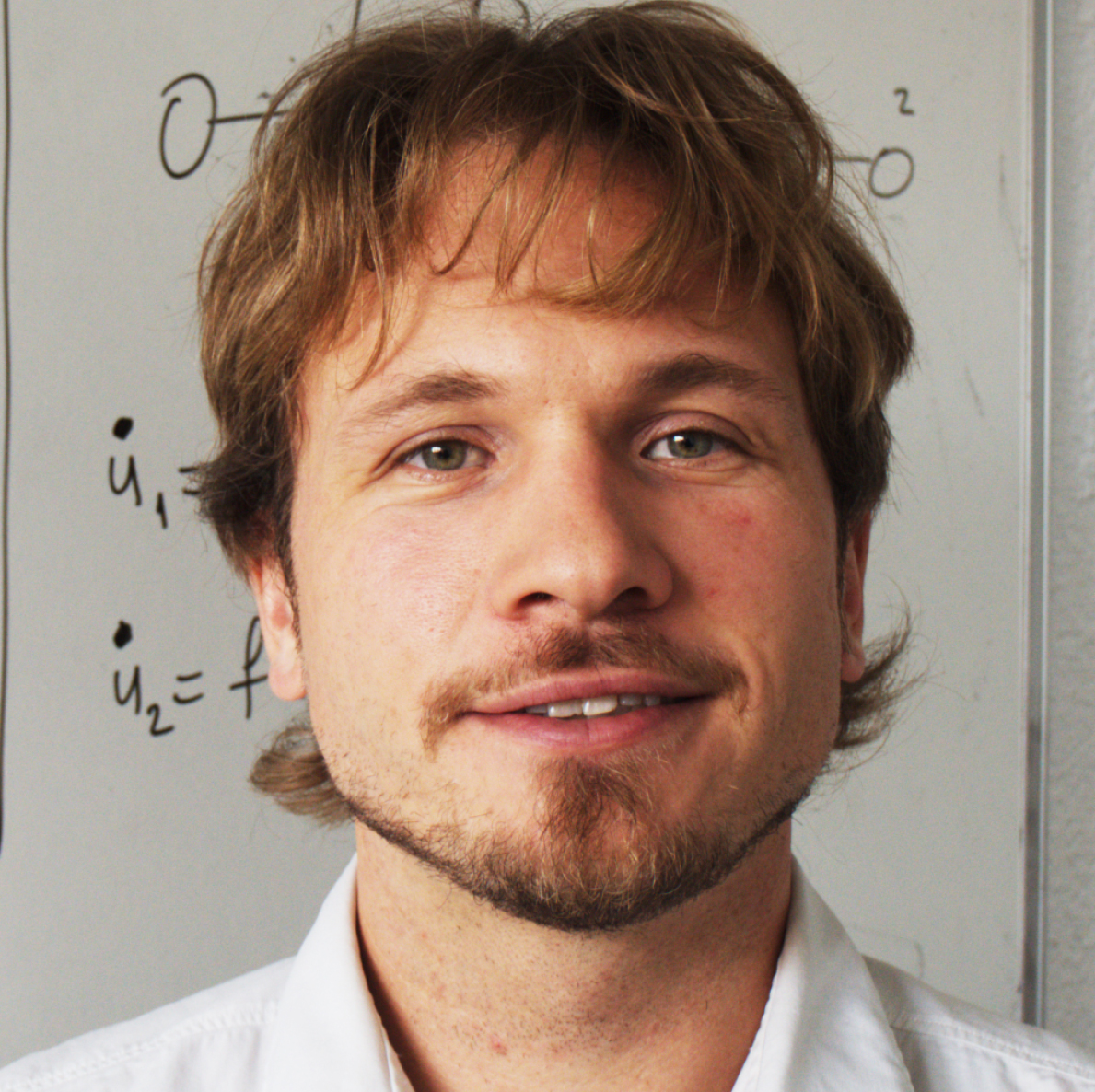 |
Researchers
| Name | Title | Image |
|---|---|---|
| Search in Name | Search in Title | |
| Härter, Jan Olaf Mirko | Associate Professor |
|
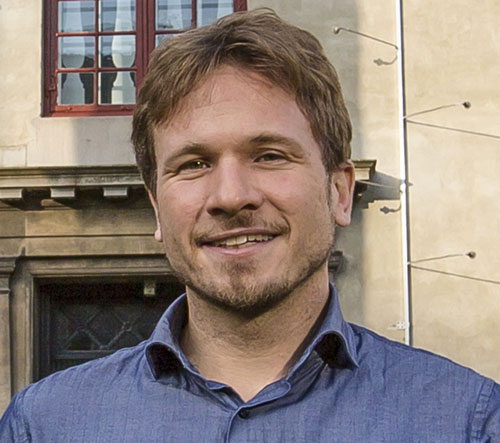 Group leader
Group leader
Jan O. Haerter, Associate Professor
Tel: (+45) 93 56 57 36
Email: haerter [at] nbi.ku.dk
Funded by


Eksterne forskere
|
Faranak Tootoonchi
|
Ph.D. Student (co-supervised) | faranak.tootoonchi@geu.uu.se | |
|---|---|---|---|
| Reyk Börner | M.Sc. Student | ||
| Johan Fridrik Kjølbro | M.Sc. Student | sfk351@alumni.ku.dk |

